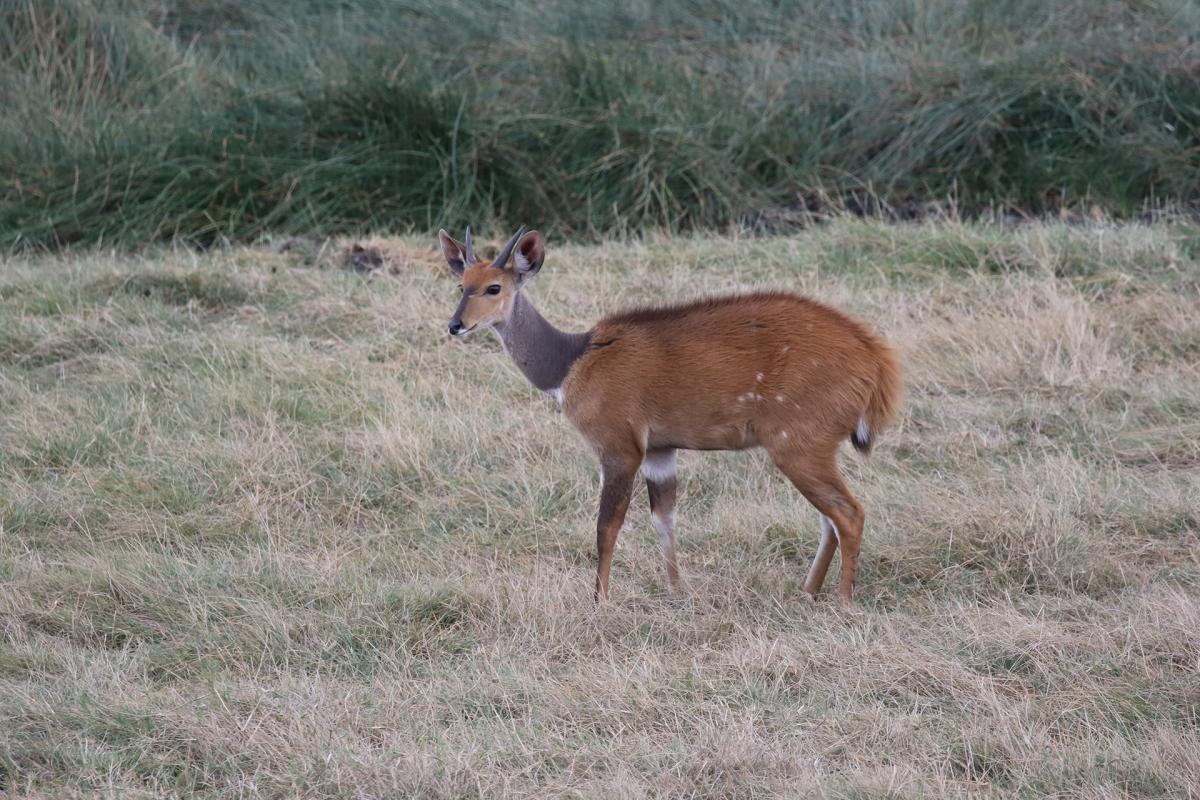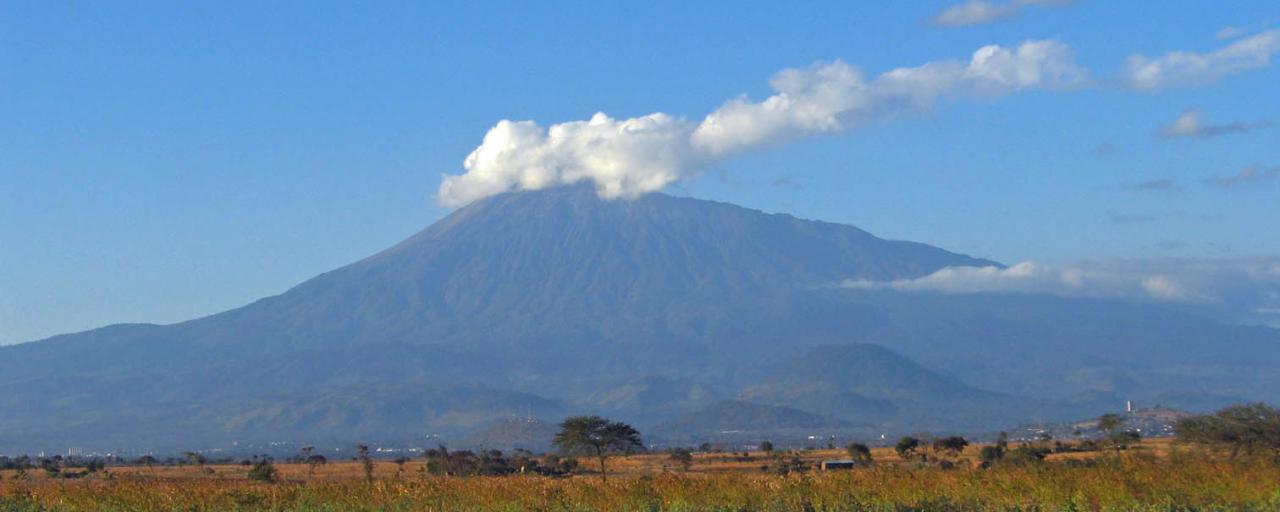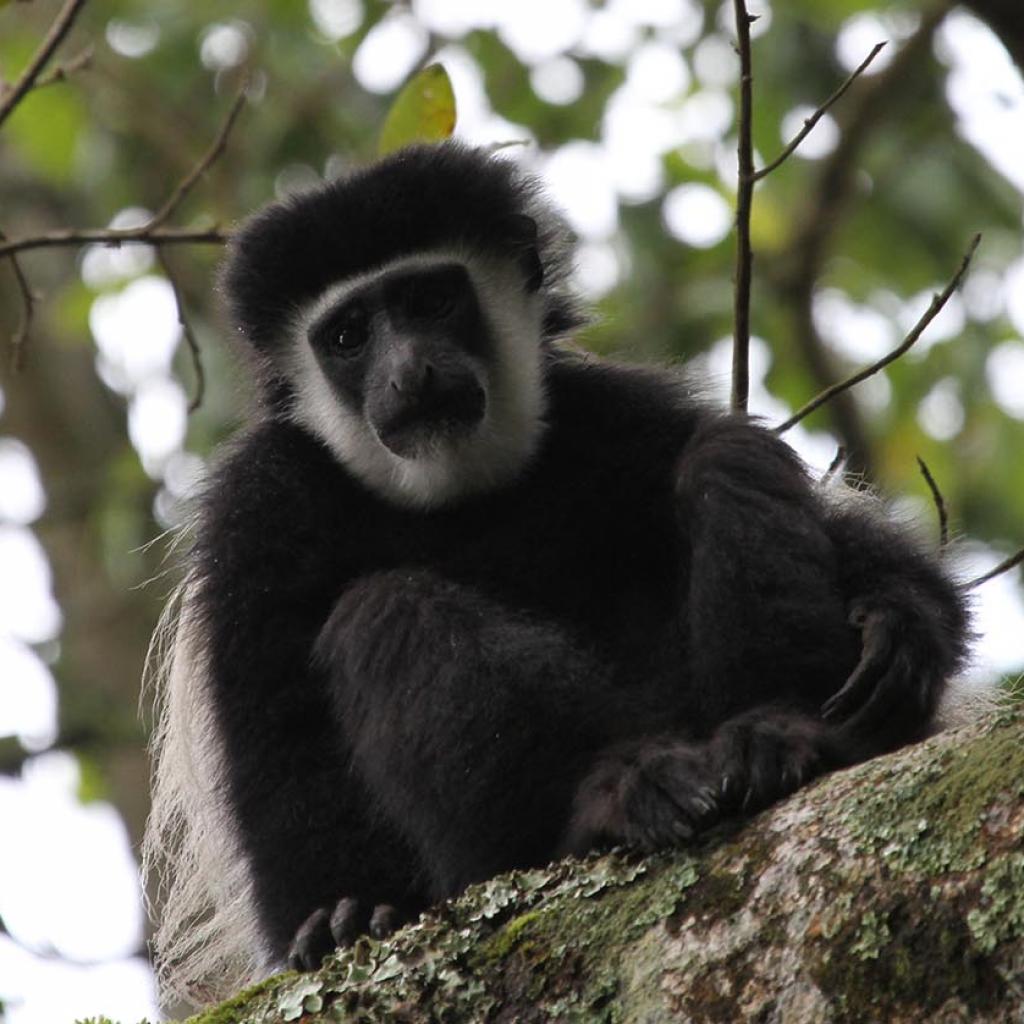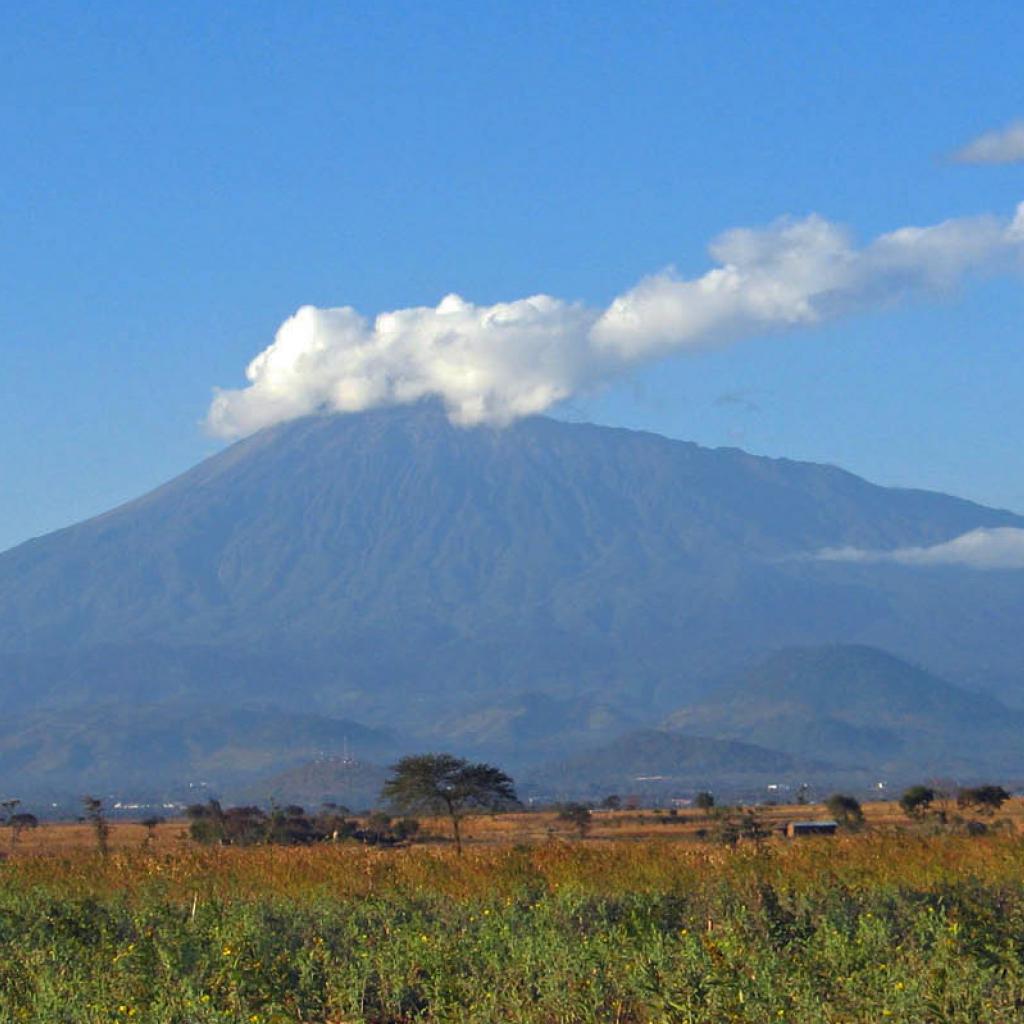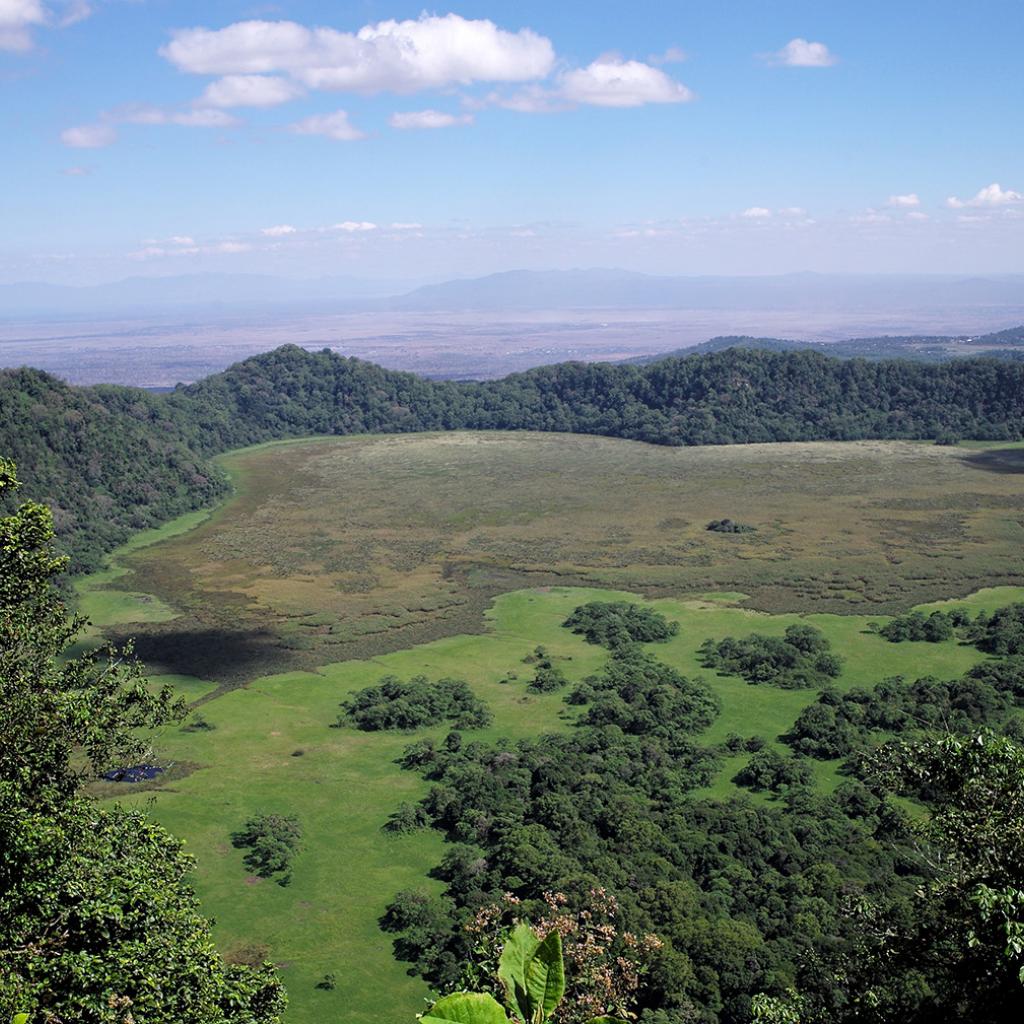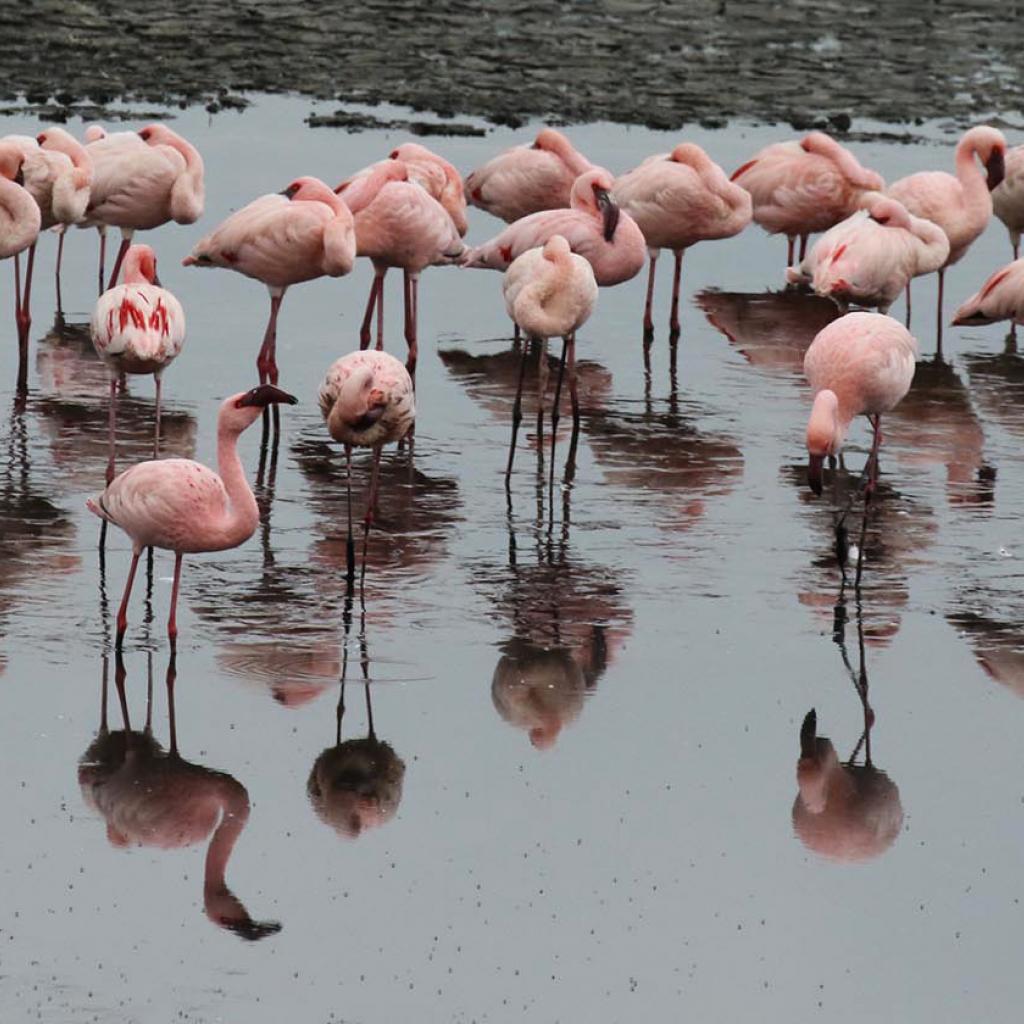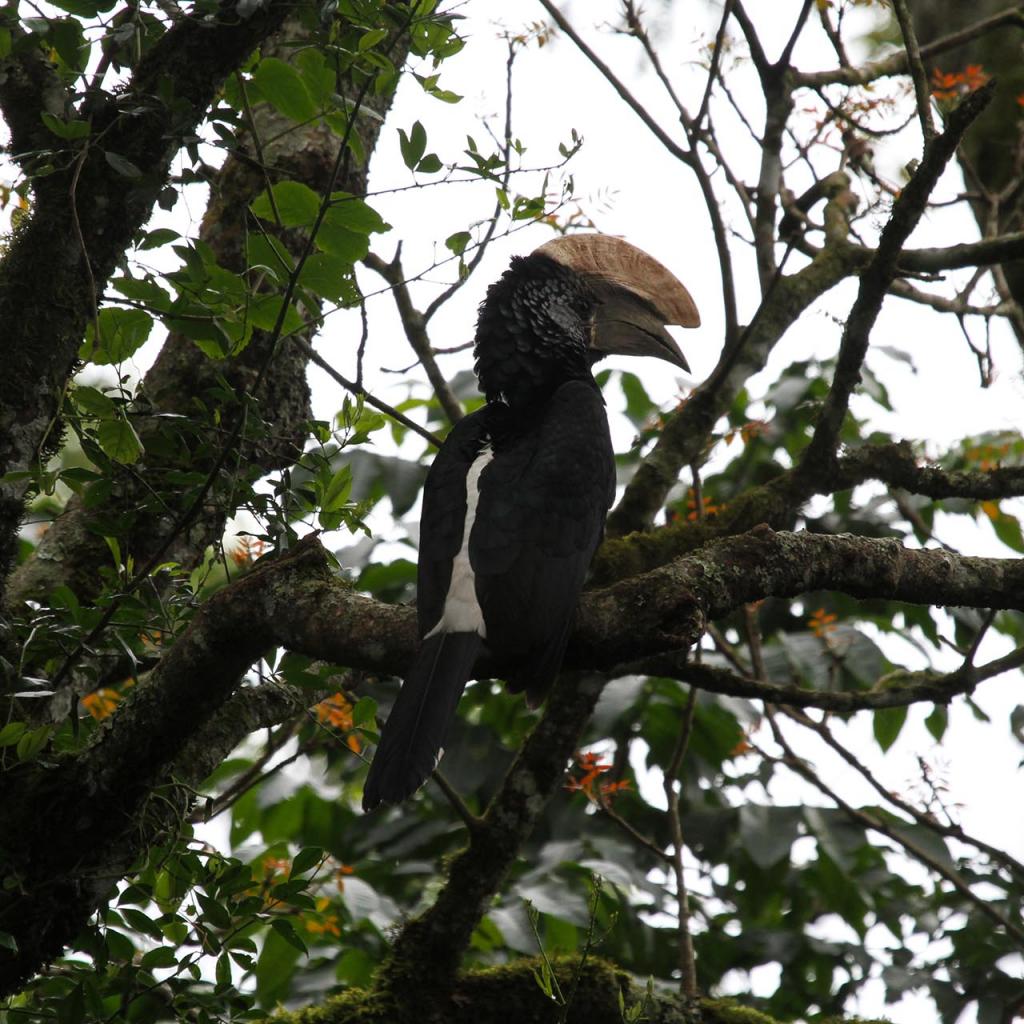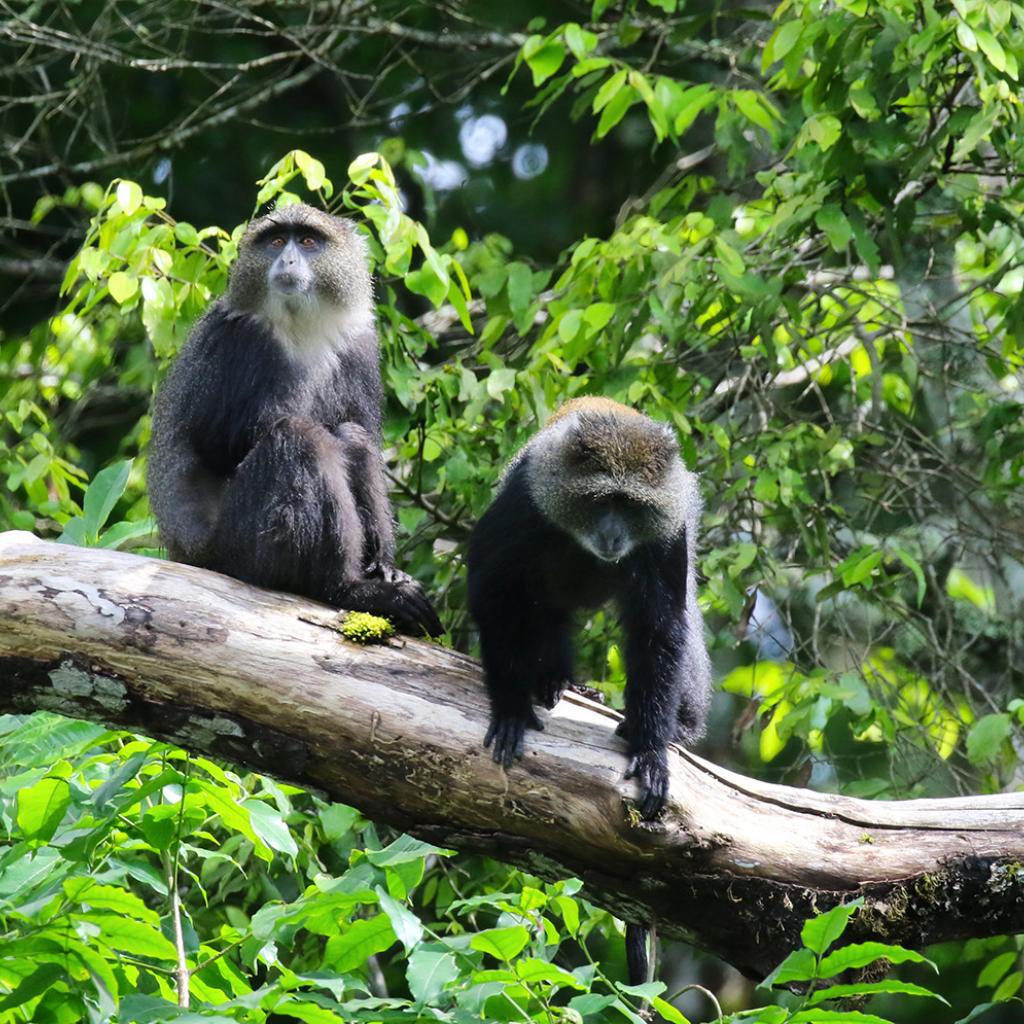The Meru Mount occupies more than half of the Arusha National Park area in the West; it is an active volcano and its last eruption occurred in 1910.
This volcano is 4,566 meters high and the second highest mountain in Tanzania after the Kilimanjaro Mount, one of the 10 highest peaks of the African continent.
Its profile dominates not only the park but also the nearby town of Arusha where its perfect conical shape is visible; in fact the entire Eastern side of the mountain, that is the side facing the park, has collapsed following a huge explosion occurred 250,000 years ago; it is estimated that at that time the volcano hurled lava and boulders to 70 km away and gave birth to the seven Momela Lakes, that are also part of the National Park.
You can ascend the Meru Mount with a trek that takes 3 to 4 days by making camping along the climb; you must book the hike in advance and must be accompanied by an expert guide and an armed ranger of the Arusha National Park; many climbers tackle this climb to prepare for the more challenging climbing of the Kilimanjaro Mount.
Going up to the top you pass through different habitats, that change due to the altitude, it is similar to do a walking safari through a series of landscapes that change constantly and, at the change of habitats, even the animals that you may encounter are changing.
It goes from the grassy plains and wooded savannah, populated by buffalos, zebras and giraffes, to lush montane rainforest where you can spot elephants, buffalos, bushbucks, hyenas and leopards as well as numerous birds like the Hartlaub’s Turaco, the Narina Trogon, the Bar-tailed Trogon, the Red-fronted Parrot, also here there are many birds of prey; you can as well see beautiful deep-sea plants like the kniphofia with its bright red flowers or the tillandsia anchored to the branches of trees.
Continuing towards the summit, vegetation gives way to rocky mountain desert, here the vegetation is sparse but you can see the purple spots of lobelia; moreover here you have the chance to spot the Bearded Vulture.
From this point, quite easily, you come to the asymmetric and sharp edge of the crater; looking inside the crater a cinder cone is visible that can be scaled in turn, also from the summit of the Meru Mount the view of the Kilimanjaro Mount is spectacular and this is worth alone the climb.
On the Eastern side, at the base of the Meru Mount, you can also make walking safaris and come up to the Njeku Belvedere on the crater floor, in this case you must be accompanied by an armed park ranger; along this path you also find a huge ficus under which both the vehicles and the elephants can pass.
The ficus can also be reached by 4x4 and not only with a long hike of about 4 hours through the park.
Along the way, you cross first an area of savannah usually busy with buffalos and giraffes, then you continue turning around a hill, where there are small waterfalls; from here the road climbs up to a lookout point from where you see the whole park; finally back down the street and here you come to the forest, it is precisely in this area that the large ficus is.
In this area there is also the Tululusia Hill that was formerly used as an observation point by local tribes who were often in conflict with each other; today it is often scaled and it is also one of the favorite spots for park camping.
The hill is covered with dense rainforest where they live elephants, buffalos, white and black colobus, red duikers, sunis, leopards and pythons.
From here you can see the whole lower part of the Arusha National Park, but it also has an excellent view of the Meru Mount and the Kilimanjaro Mount.
The other areas of the park
- The Ngurdoto Crater and the Small Serengeti
- The Momela Lakes
